30 St Mary Axe - The Gherkin
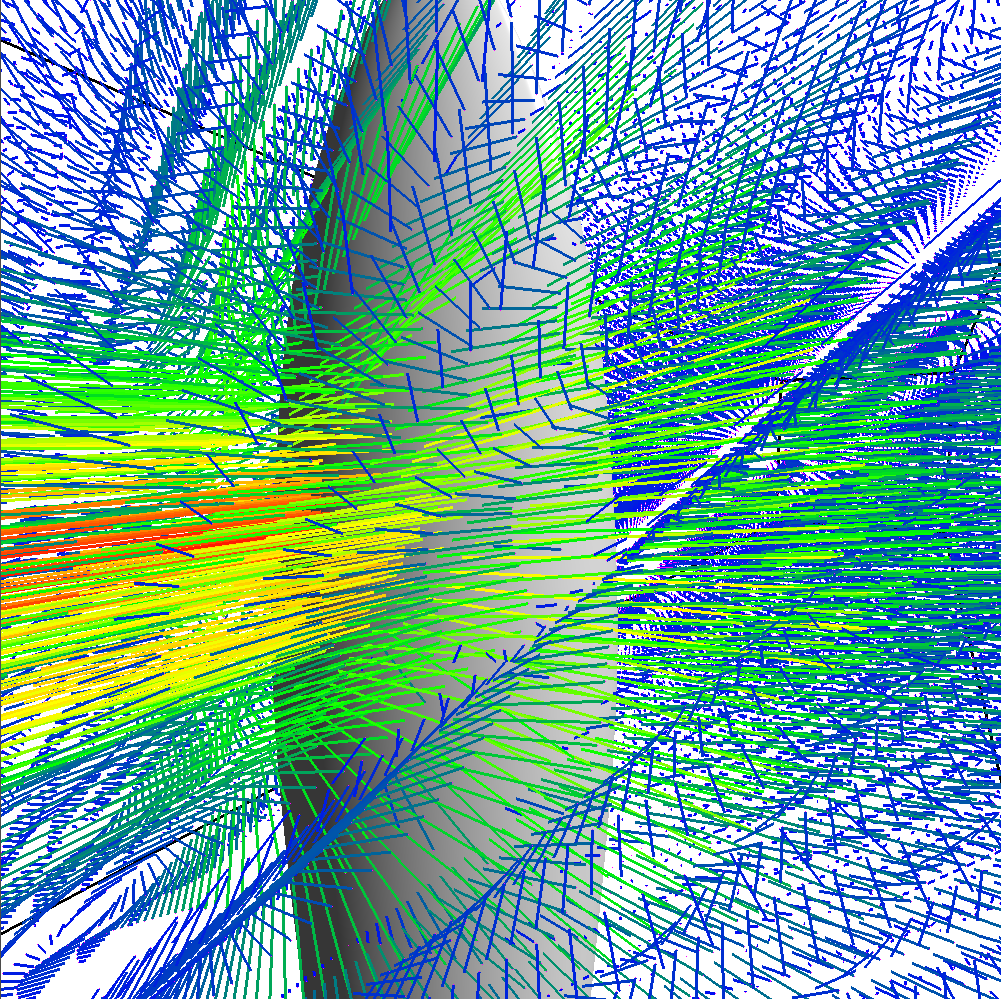
Aerodynamic Performance Analysis
This simulation demonstrates wind interaction with the 180m-tall Gherkin building. The geometrically accurate model was created using architectural plans in Revit.
Velocity vectors use a pink tip to indicate direction while color encodes magnitude (red = fastest, blue = slowest). The flow remains attached along the curved facade, producing a remarkably narrow wake - exactly what the tapered form was designed to achieve.
Key Observations:
- Minimal flow separation at all heights
- Smooth acceleration around the building
- Narrow wake reduces pedestrian-level winds
Detailed Flow Analysis at Different Heights
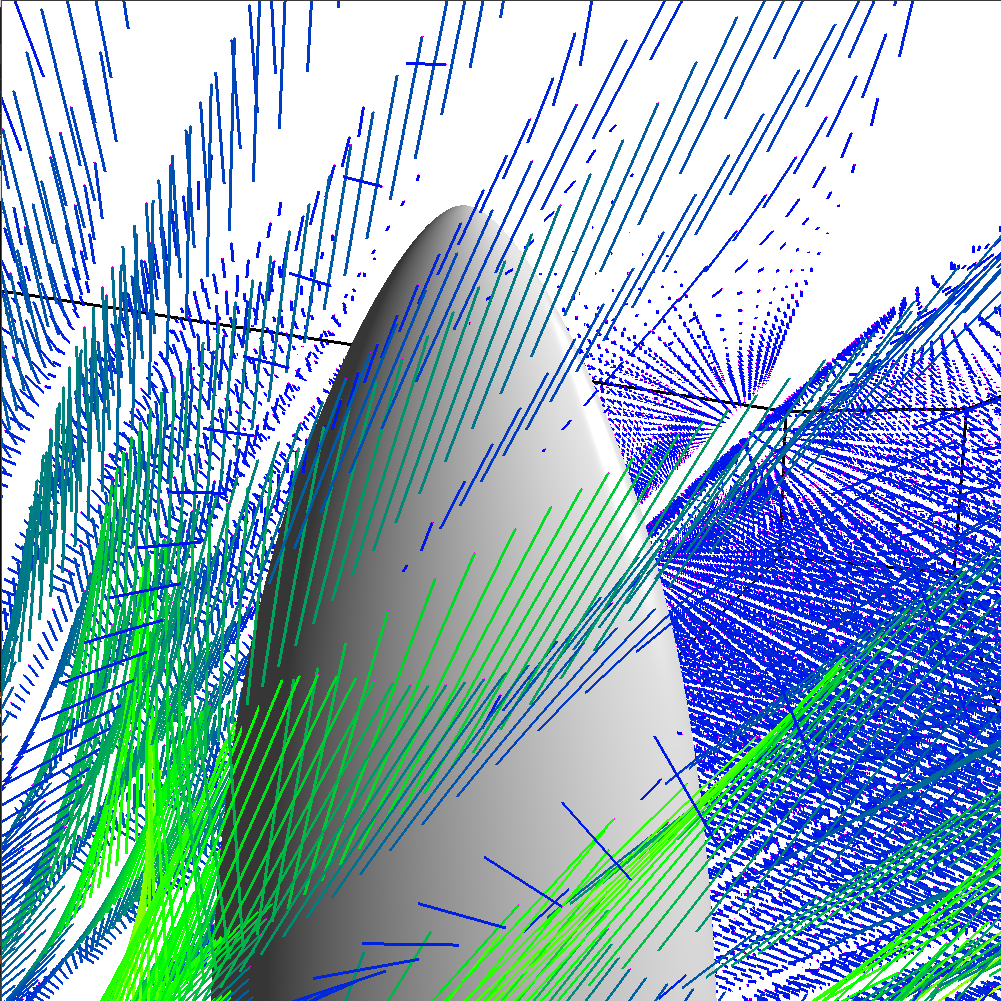
Upper Tip
Near the pinnacle, wind smoothly hits the Gherkin and flows up and around it with minimal disturbance.
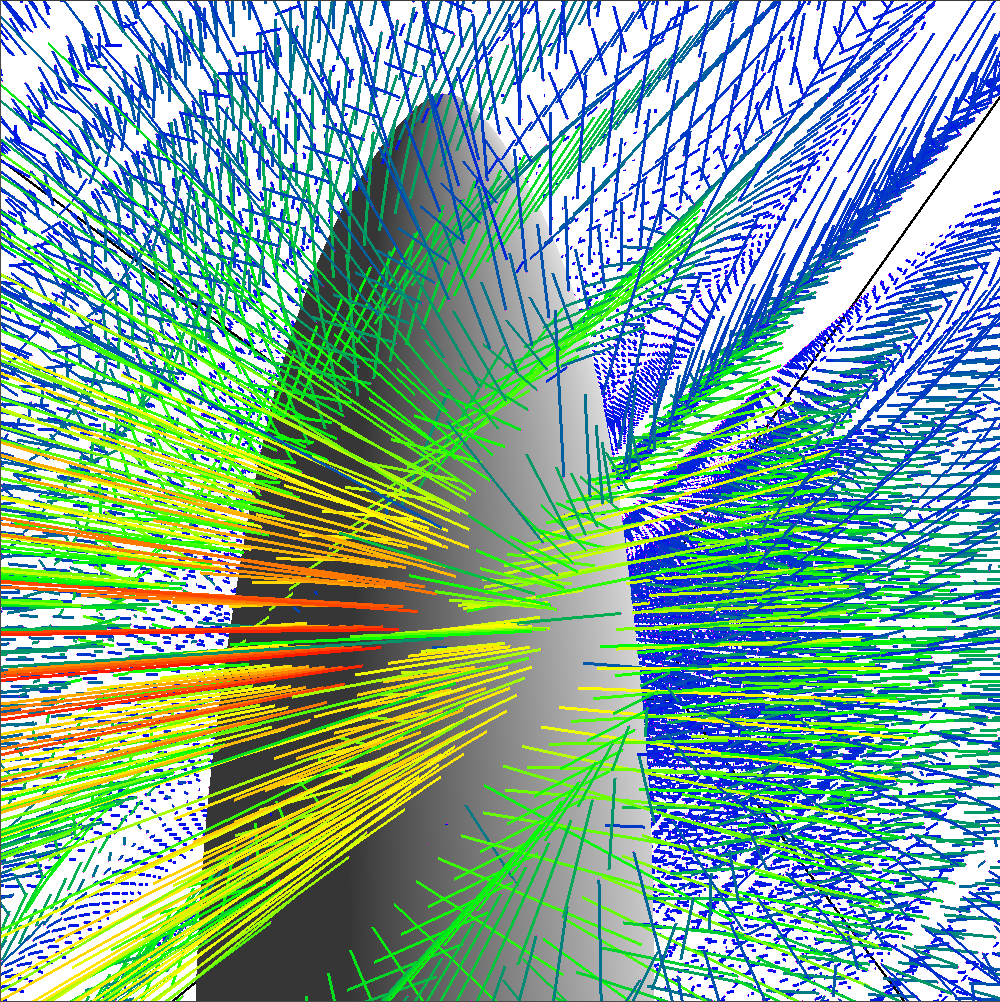
Upper Third
Red and yellow streaks upstream indicate high-speed inflow that splits smoothly around the tower without downward spillage.

Mid Height
Cross flow remains fully streamlined with vectors skimming along the surface, confirming excellent aerodynamic optimization.
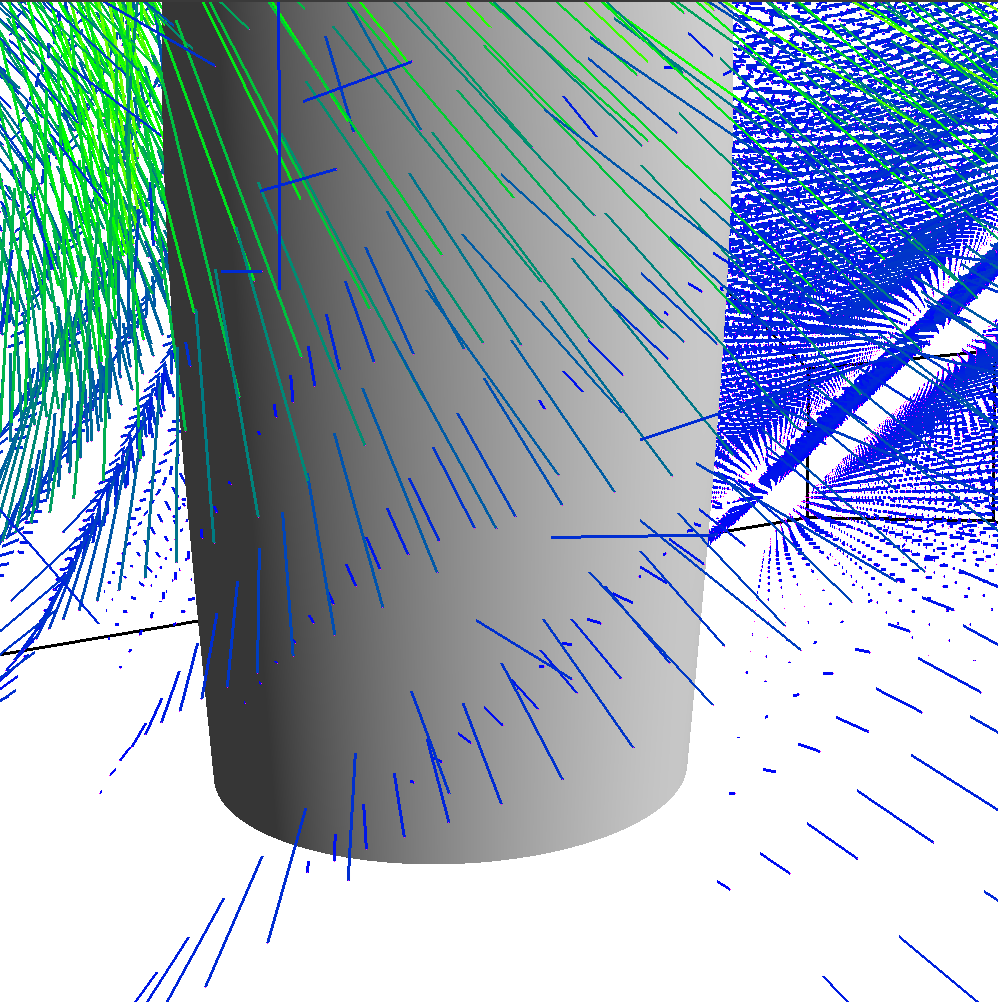
Pedestrian Level
Even at the base, the wake remains narrow with weak downdrafts, demonstrating effective pedestrian comfort design.
20 Fenchurch Street - The Walkie-Talkie
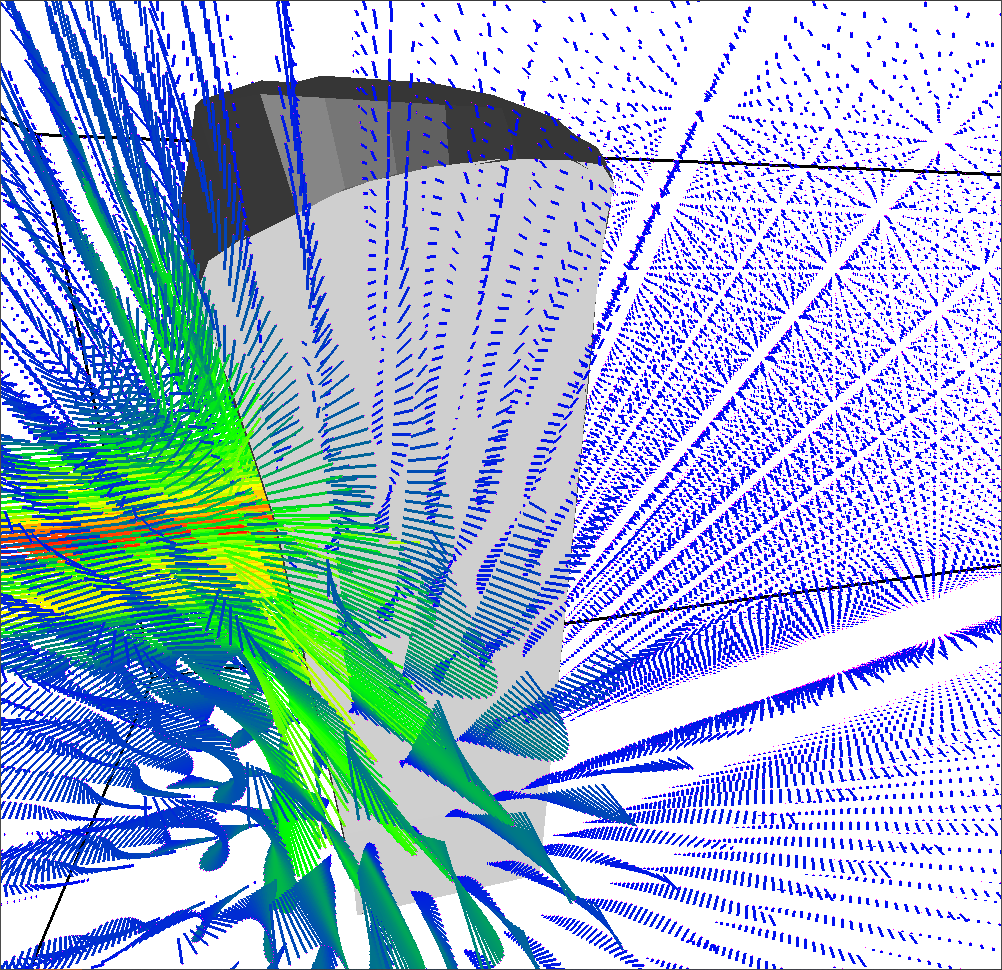
Downdraught Effect Analysis
This notorious London building demonstrates how architectural form can create dangerous wind conditions at street level. The same inlet wind profile as the Gherkin produces dramatically different results.
Flow separation occurs immediately, with a strong vortex rolling down toward street level - matching real-world reports of pedestrians being knocked off their feet in high winds.
Key Observations:
- Immediate flow separation at upper levels
- Strong downward acceleration of wind
- Significant pedestrian-level wind amplification
Problematic Flow Patterns
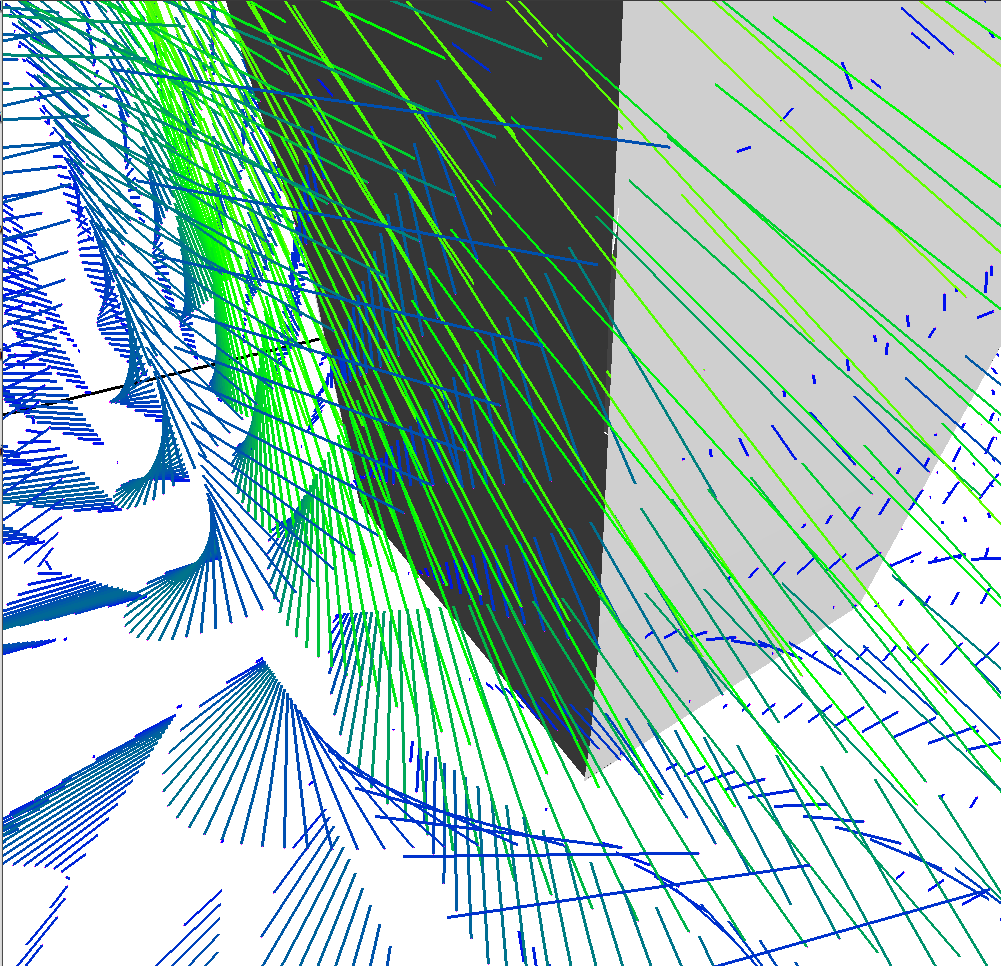
Strong Wind at Footpath Level
Vectors curve sharply downward while maintaining strength (non-blue colors), then swirl back upward, confirming a powerful recirculation cell that amplifies gusts at street level.

Pedestrian-level Recirculation
Inlet gusts (red/yellow) get deflected downward along the face, then roll back in wobbly vectors - clear evidence of high drag and uncomfortable pedestrian conditions.
Comparative Analysis
The Gherkin - Successful Design
- Streamlined form maintains attached flow
- Minimal wake reduces pedestrian-level winds
- Progressive tapering prevents flow separation
Walkie-Talkie - Problematic Design
- Inward-sloping face captures and accelerates wind downward
- Creates strong recirculation zones at street level
- Requires mitigation measures after construction